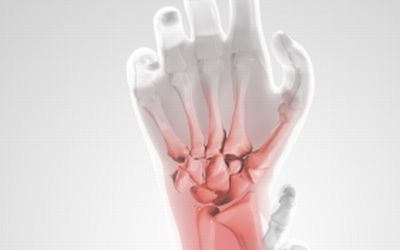
Joint pain is not acceptable. Simply put, people in pain dont work out and can become inactive. And considering that our bodies are meant to move, this is definitely not a good thing.
Staying active is one sure way to improve your quality of life and, for most of us, will ultimately translate into a longer life.
New research shows the antioxidant, ergothioneine, holds promise for relieving joint pain. This means that we could potentially have another weapon in combating arthritis.
The science is not conclusive yet, but it's promising Bruce N. Ames, Ph.D., senior scientist at the Childrens Hospital Oakland Research Institute, said in recent interview with Nutraingredients.com, Ergothioneine is a very weak antioxidant compared to other compounds in the cell, which isnt necessarily a bad thing. Specificity is the key."
Ames is right. Any time you can target a tissue and deliver a nutrient specifically to that tissue, the effects will be greater than using a nutrient that distributes all over the bodyeven if that nutrient is stronger than the more specific one. And thats exactly what you have with ergothioneine: z potentially more joint-specific antioxidant.
Some doctors actually think ergothioneine might someday be classified as a new human vitamin. Dirk Gründemann, Ph.D., from the University of Cologne in Germany published a paper in 2009 that highlighted its properties as a vitamin (Proc Natl Acad Sci USA. 2005 Apr 5;102(14):5256-61). He wrote it concentrates in the blood by a specific transporter and then is delivered directly into different tissues, like joints.
Ergothioneine Reduces Pain and Improves Motion
Twelve people were recruited for a study designed to test ergothioneines pain-relieving properties (Prev Med. 2012 Feb 9. DOI: 10.1016/j.ypmed.2012.02.001). The average age was 54, and all of the participants had mild to moderate chronic joint pain. The pain limited their range of motion (ROM).
The subjects were given 500 µg of day of ergothioneine with additional nutrients, including white willow bark and glucosamine. They took the cocktail" for six weeks and then were followed for an additional six weeks.
Results showed all of the subjects experienced improvements in their ROM after six weeks of treatment. Reports of pain also decreased, compared to baseline pain and ROM.
Now its true the subjects took other nutrients during the study, and these probably did help. However, the reduction in pain and improvement in ROM were far greater than expected based on previous studies using the additional nutrients. This implies ergothioneine is playing a significant role. And, remember, whats really exciting about it is how targeted it is. It basically appears to "love" joint tissue.
Natural Topics and Trends
Ergothioneine is being dubbed as "EGT" within the industry and is currently being developed by manufactures for use in several products. The majority of the products will be for joint health, and EGT will be combined with more traditional ingredients such as glucosamine, hyaluronic acid (HA) and methylsulfonylmethane (MSM).
However, because of ergothioneines specificity for joint and connective tissue, it will also be used in skin care products, combined with type-2 collagen, keratin, lycopene and resveratrol.
What makes this antioxidant unique is its tissue specificity and long half-life, around 30-days, according to Bernie Lands, Oxis International president and owner of patented synthesis process for ergothioneine.
Antioxidant specificity will be a major trend in the industryand ergothioneine is leading the way. For instance, glucoraphanin found in cruciferous vegetables shows specificity for the skin and connective tissues. Once in the target tissue, glucoraphanin enhances expression of glutathione-S-transferase, helping to boost glutathione levels. (Biochem J. 1995 Oct 15;311(Pt 2):453-9; and Mol Carcinog. 2011 Jun;50(6):479-86.)
Look for ergothioneine and glucoraphanin combinations used in joint and skin care products in 2013.
Keeping joints healthy and pain free are essential to staying active, which is a key longevity factor. Ergothioneine, or EGT, is going to be a major player in the joint and antioxidant market for foreseeable future.
Additional Strategies for Improving Joint Function
By age 70, a vast majority of people will be affected to some degree by arthritis. In the elderly, arthritis of the knee and hip are leading causes of disability. This can negatively affect the activity level of elderly Americans.
We really need to keep moving as we get older. The more active people are, the better their lives will be. Heres just a quick list of things that have been helpful in keeping joints healthy and people moving:
Resistance exercises. These exercises apply light weight across the joint, but with even movement and resistance throughout a full range of motion. This is excellent for strengthening joints.
Water aerobics. Any exercise done in water takes the pressure off of joints. Cardiovascular health can be improved without damaging joints or waking up in pain the next day.
Omega-3 fatty acids. The best dose is between 2,000 and 4,000 mg of omega-3 fats every day. This can ease inflammation within the joint space. New data reveals omega-3 fats from whole krill oil are particularly effective for joint health (Altern Med Rev. 2010 Apr;15(1):84-6).
Korean angelica. Rich in decurcinol, Korean angelica is a fluid-regulating supplement that promotes healthy joints.
Michael Smith, M.D. is senior health science specialist for Fort Lauderdale, FL-based Life Extension®, a dietary supplement provider that funds and reports on anti-aging research and integrative health therapies. He is also host of Healthy Talk radio on WWNN-AM in the greater Miami area.
About the Author(s)
You May Also Like




.png?width=800&auto=webp&quality=80&disable=upscale)